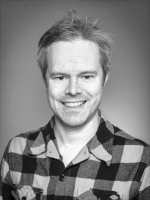My graduate background in medical ultrasound and nonlinear wave propagation was established during MSc and PhD thesis work at the Ultrasound Research Group at the Department of Circulation and Medical Imaging, NTNU, advised by Bjørn Angelsen. My next research affiliation was with the DSB group at IFI as a postdoctoral fellow, gaining additional research and teaching experience in adaptive beamforming, sonar imaging, ultrasound imaging, as well as in elastography and causal models for waves in complex media. Thereafter, joined the independent research institute NORSAR, where I have had the opportunity to work on interesting datasets and science related to array seismology and atmospheric infrasound acoustics. I am the Principal Investigator for the ongoing project Middle Atmospheric Dynamics: Exploiting Infrasound using an Interdisciplinary Approach at High Latitudes (MADEIRA), which runs until 2022 with funding from the FRINATEK basic research programme. In this ambitious effort, we exploit a combination of infrasonic and meteor-radar datasets to characterize the middle atmosphere and to constrain high-top atmospheric model temperatures and winds. This will pave the way for improved medium-range weather forecasting.
At MLS/DSB, I see great opportunities to research holistic approaches and enhanced integration between signal processing, image reconstruction, image processing, and automated interpretation—including machine-learning based approaches. This way we can harvest from synergies between expertise in our units. In acoustic imaging, for example medical ultrasound, we now see an availability of software and hardware computational capacity and channel-data real-time access, which greatly exceeds what was achievable only some years ago. This opens up for implementing and augmenting exciting beamforming and image reconstruction/enhancement algorithms for which elegant fundamental array processing and estimation theories have been developed during the past decades, but where we until recently only could validate and assess results based on simulations and limited off-line case studies. Moreover, I would like to foster collaborations with acoustic imaging and application partners in Norwegian and international academic, health, and industrial sectors. This is also necessary in the context of offering education which ensures that our students are attractive on the labor market.
Our bachelor-level Digital Signal Processing course is important. Not only as an entry-point for students to our field of research, but also because fundamental skills in this domain are becoming increasingly relevant in a myriad of data-science related fields of industry and academia. This year, I teach in our courses on Array Signal Processing (spring semester), Digital Signal Processing (autumn), and Acoustic Imaging (autumn).
